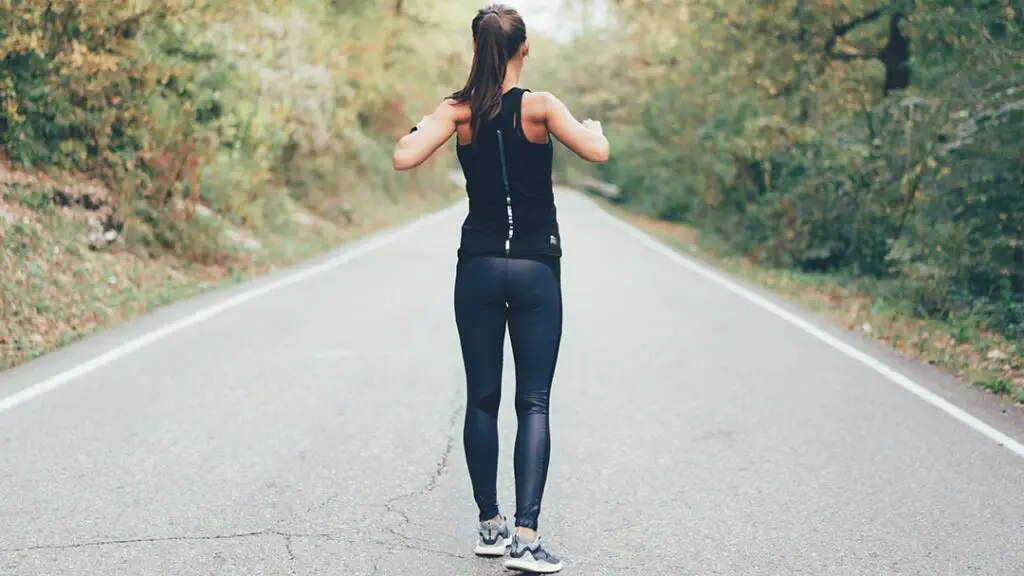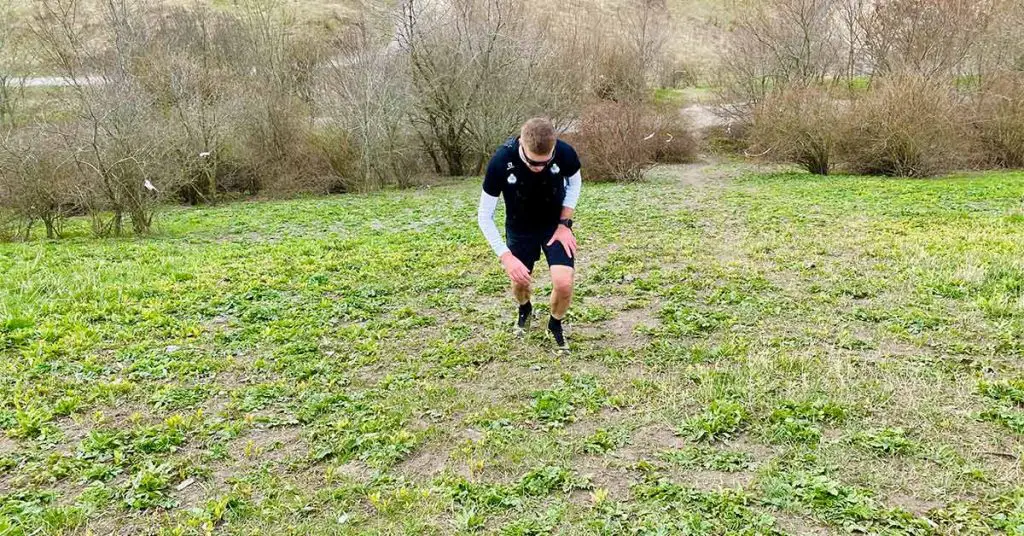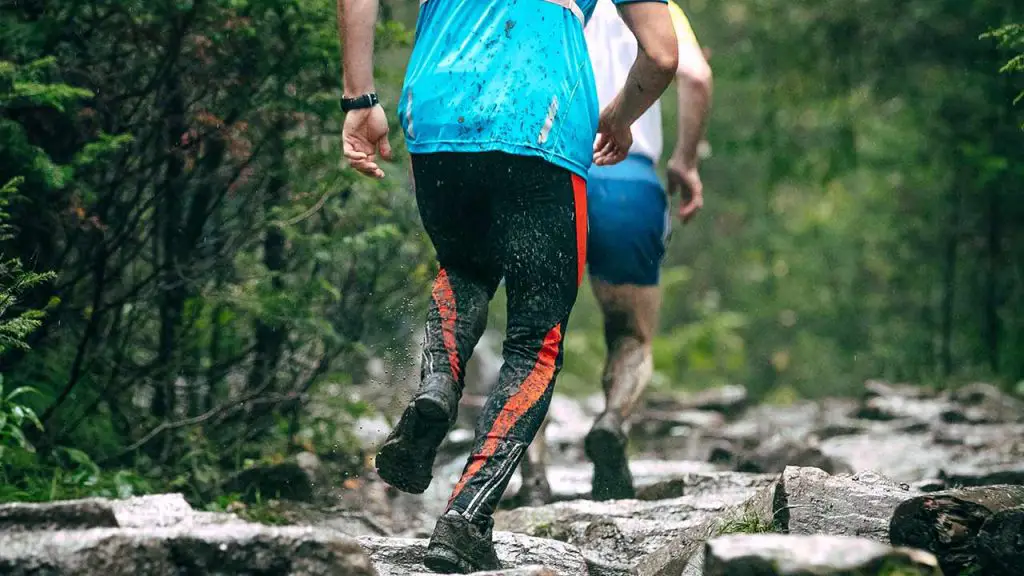Estimated read time: 6 minutes.
Have you ever wondered whether cardiovascular exercise like running could make your butt look better or worse? As it turns out, the answer to this question is not a simple yes or no – it depends on several factors! Even though there’s no definitive answer, we know that different types of running can affect how your glutes look and feel.
In this blog post, we’re examining what kind of running will make your butt bigger and tips for toning up and enlarging those cheeks. Read on to learn more about boosting booty gains with running!
Running is an excellent form of exercise that comes with a plethora of health benefits. One of the most talked-about concerns is whether or not running makes your butt bigger. The answer is not simple, as it depends on the type of running. If you’re only doing light jogs, then it’s unlikely that your butt will grow in size.
However, if you’re incorporating hills, sprints, or resistance exercises into your running routine, you’ll likely see some growth in your glutes. So, if you’re someone who wants to tone thigh muscles and firm their derrière, then consider adding some difficult running exercises to your routine.
Where Does Running Build Muscle?
When it comes to building muscle through running, the focus tends to be on the lower body. While the thighs and calves certainly get a workout, the muscles that benefit the most from physical activity through running are, in fact, the glutes.
These powerful muscles are responsible for extending the hip and driving the legs forward during each stride, which means they work pretty hard throughout your entire run.
By engaging muscle fibers in building and strengthening your glutes through running, you can improve your overall lower body strength and stability, translating to better athletic performance in various activities. So if you want to build serious muscle through running, focus on engaging muscle fibers in those glutes and feel the burn!
Different Types of Running
Running is one of the most natural and intuitive forms of aerobic exercise around. It is no surprise that it takes on various forms depending on one’s goals and preferences. For those looking for a quick pick-me-up, short-distance running might suffice.
On the other hand, long-distance running serves to build endurance and stamina. For those who prefer explosive movements, sprints offer an intense and fast-paced workout.
Finally, hill running is a great way to challenge oneself by running uphill and incorporating inclines into the terrain. Whatever your choice, each type of running comes with unique benefits, making it easier to find the right match for your fitness journey.
How Does Each Type of Running Affect Your Butt Differently?
Running is a fantastic way to keep fit and burn calories. However, did you know that different types of running can affect your body in different ways? In particular, your glutes or butt muscles can be impacted in unique ways depending on the type of running you do.
For example, long-distance running may help to tone your glutes, while sprinting can help to build up their strength and size. Uphill running is also excellent for your butt and glute muscles, as it requires more effort to maintain proper form and balance.
So, whether you are a long-distance runner, a sprinter, or a hill climber, know that each type of running can impact your glutes and leg muscles differently. So, mix it up and try various kinds of running to get the maximum benefit for your butt and gluteal muscles.
Tips for Runners to Get the ‘Desired’ Results
Running is a challenging and rewarding exercise that can yield fantastic results. If you’re a runner looking to achieve your desired outcome, there are a few tips you can follow to make the most of your workouts.
Firstly, ensure you focus on form and technique, as proper posture and stride can help you run faster and for longer periods. In addition, diversifying your workouts with intervals, hill sprints, and other variations can help target different muscles and improve your overall fitness.
Lastly, don’t forget to prioritize recovery with rest days, stretching, and foam rolling to help prevent injury and ensure you feel your best for your next run. With these tips in mind, you’ll be well on your way to achieving your running goals and getting the most out of your time on the road or treadmill.
Avoid Common Mistakes Made by New Runners
When new to running, it can be easy to fall into common pitfalls. However, with a few tips, you can avoid these regular running mistakes and set yourself up for a successful running journey:
- Start slowly and gradually increase your distance and pace. Overdoing it too quickly can lead to injury or burnout.
- Invest in proper running shoes that fit well and are comfortable. Wearing the wrong shoes can also lead to injury.
- Listen to your body, and don’t push yourself too hard.
Rest and recovery are just as important as exercise. With these tips, you can avoid common mistakes and enjoy all the benefits of running.
Running With Increased Weight For A Bigger Butt
If you want to make your butt bigger and add size and shape to your glutes, then power training while running with increased body weight, can help. This type of training not only helps to increase the size and strength of your butt muscles but also increases power and speed in the running.
Try adding ankle weights or a weighted vest while doing short or hill sprints. Be sure to start slowly and build up gradually over time. With the proper technique, you’ll be well on your way to achieving a bigger butt through running!
What Is the Best Way to Sculpt the Glutes if You Dont Run
Running is not the only form of exercise you can do to target and sculpt the glutes. Other forms, such as strength training exercises, or bodyweight exercises, can effectively target this muscle group.
Lunges, squats, deadlifts, and hip thrusts are all excellent for building strength and toning your glutes to make your butt bigger too. Additionally, high-intensity interval training (HIIT) can help to increase muscular endurance and definition that will give your butt a more defined look.
With various options available, there’s no need to run if it isn’t something you enjoy – simply pick the activity that best fits your lifestyle and goals!
Conclusion
In conclusion, running can be a great way to increase your cardiovascular health and burn extra calories. While it may make your butt bigger — depending on the type of running — it is important to consider how the different kinds of running will affect body fat and muscle size in your butt differently.
Short distances are the least likely to cause an increase in size, but if you want to see results in your booty, try incorporating sprints and hills into your routine. Also, remember to start slowly and listen to your body while working out — as overtraining can lead to injuries that can even set back any progress made.
If done correctly, running can improve your cardiovascular system and mental health, and help you lose weight and get the desired shape for your butt that you’re after too!
FAQ
What type of running will make my butt bigger?
While running can help tone your glutes, sprints and hill runs are great for building the strength and size of your butt muscles. Incorporate these exercises into your fitness routine to see results in your booty!
How often should I run to get the best results?
Everyone’s body is different, so it’s essential to listen to your body when deciding how often you should run. In general, it is recommended that runners aim for 3-4 days a week, with at least one day of rest. This allows enough time for recovery without putting too much strain on the body. Additionally, incorporate other forms of exercise into your routine to keep your entire body balanced.
Are there any other tips for running?
Yes! Make sure to warm up before your run and cool down afterward. Additionally, invest in proper running shoes that fit well and are comfortable. Finally, stay hydrated throughout your runs — dehydration during endurance running can lead to fatigue and cramps.
- How Many Laps Around a Track is a 5K: Your Guide - October 22, 2023
- When is Track and Field Season? - October 22, 2023
- Understanding the Length: How Long Is a Running Track? - October 22, 2023



